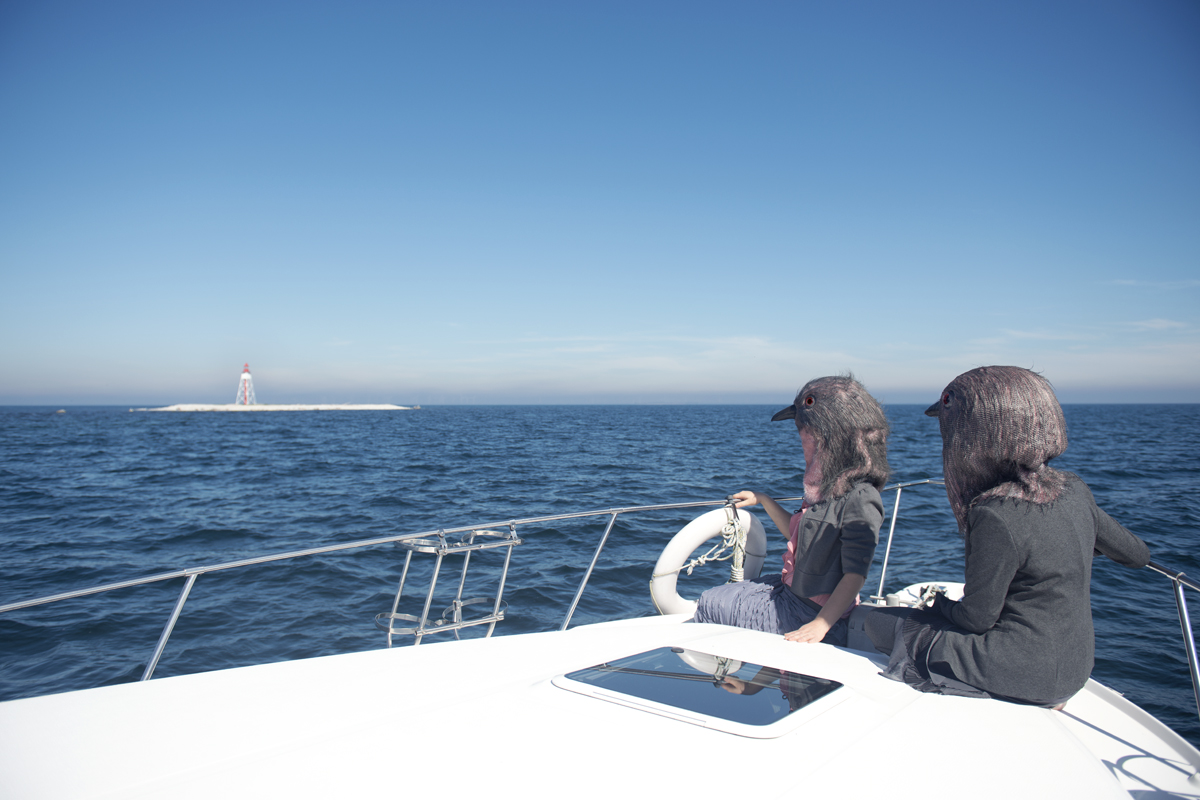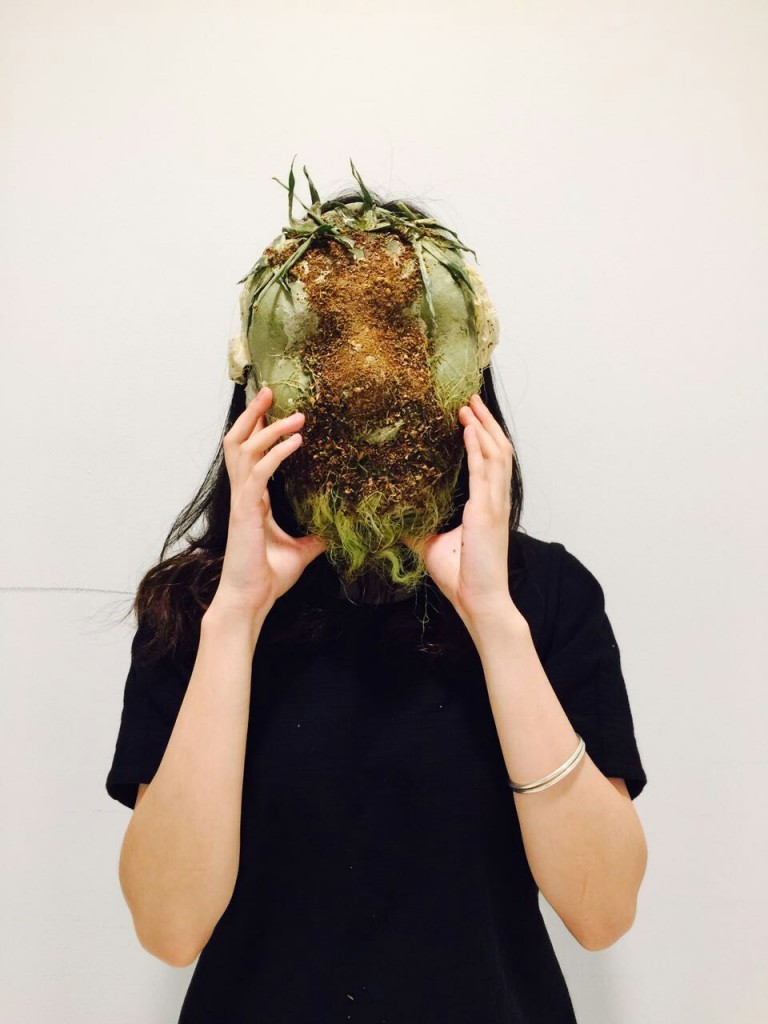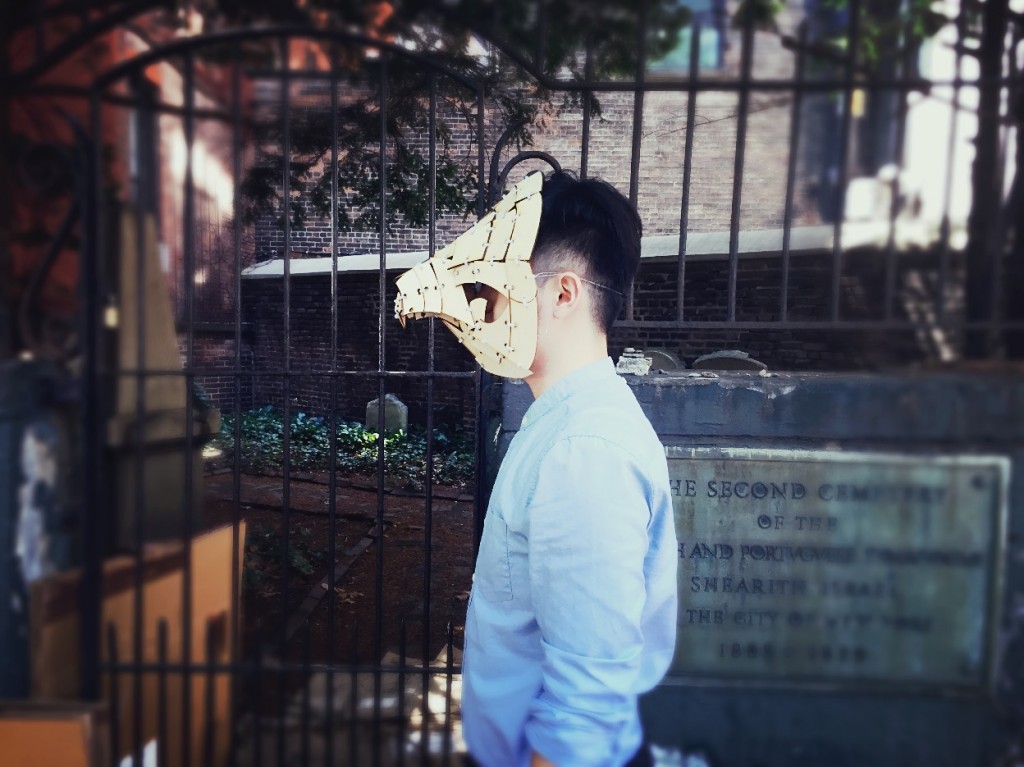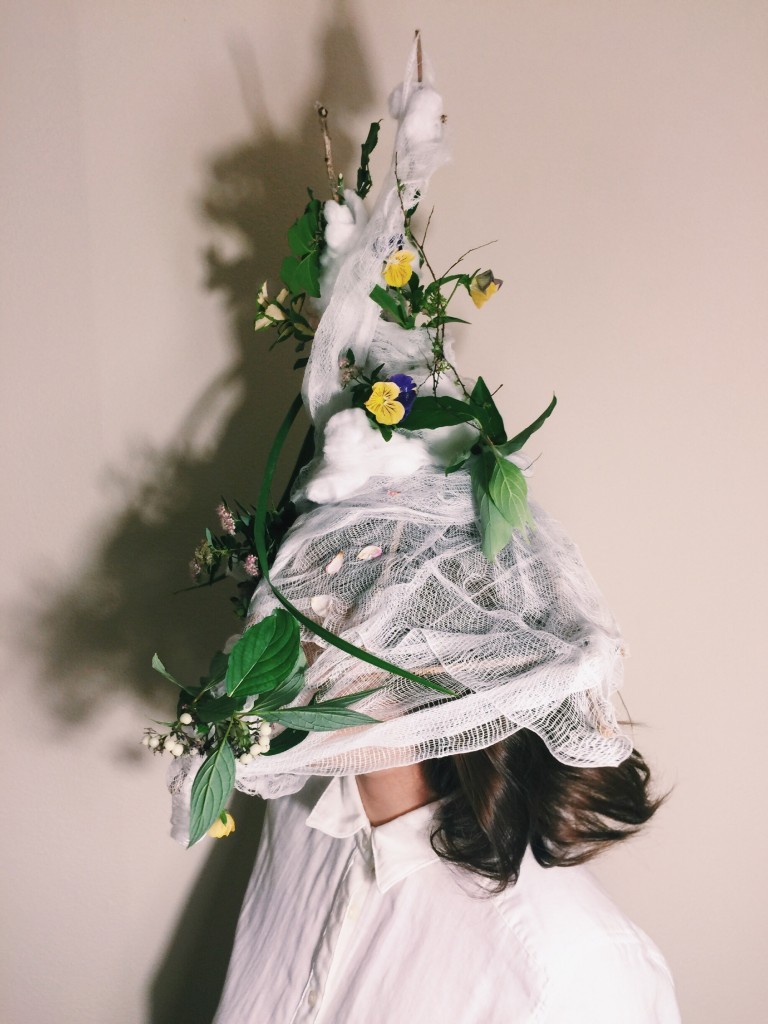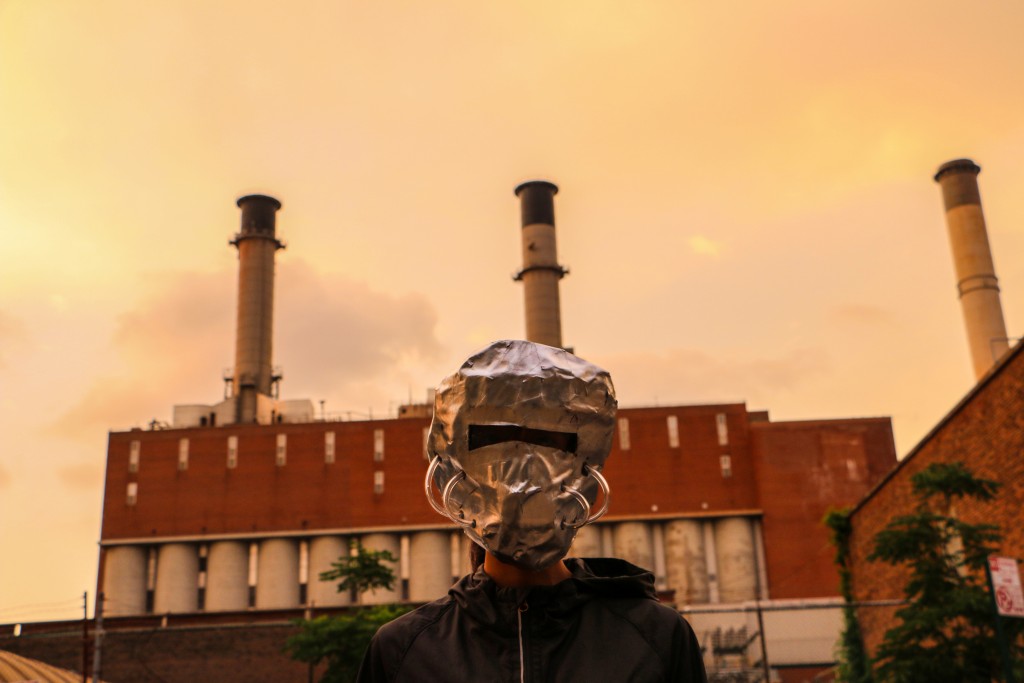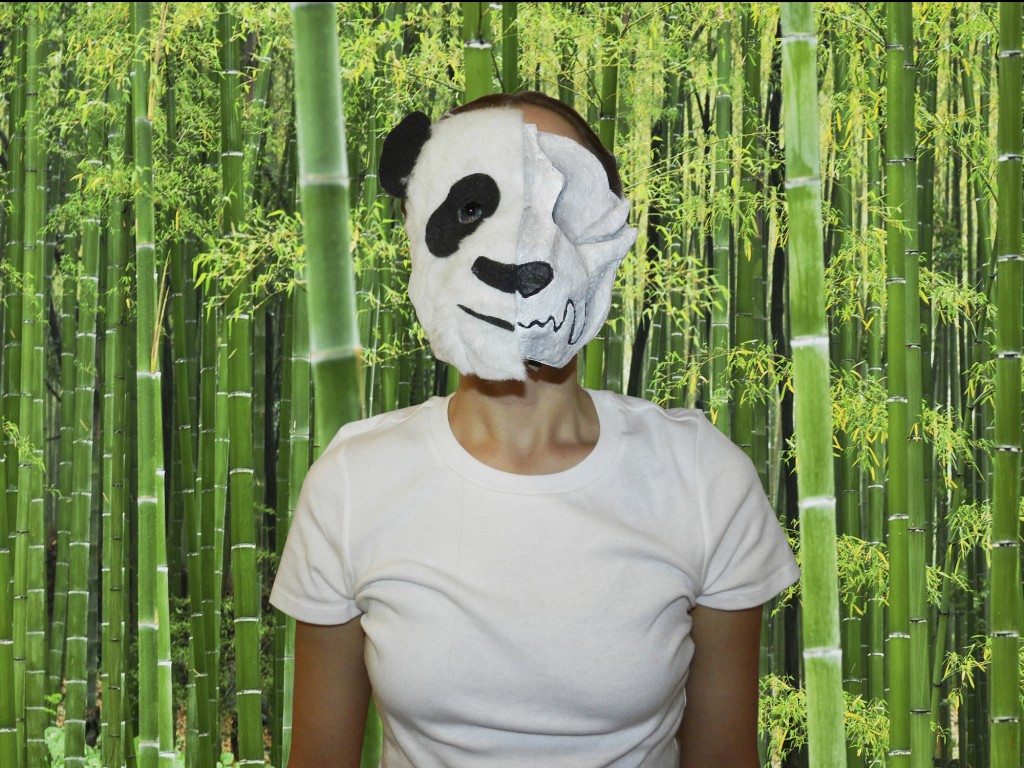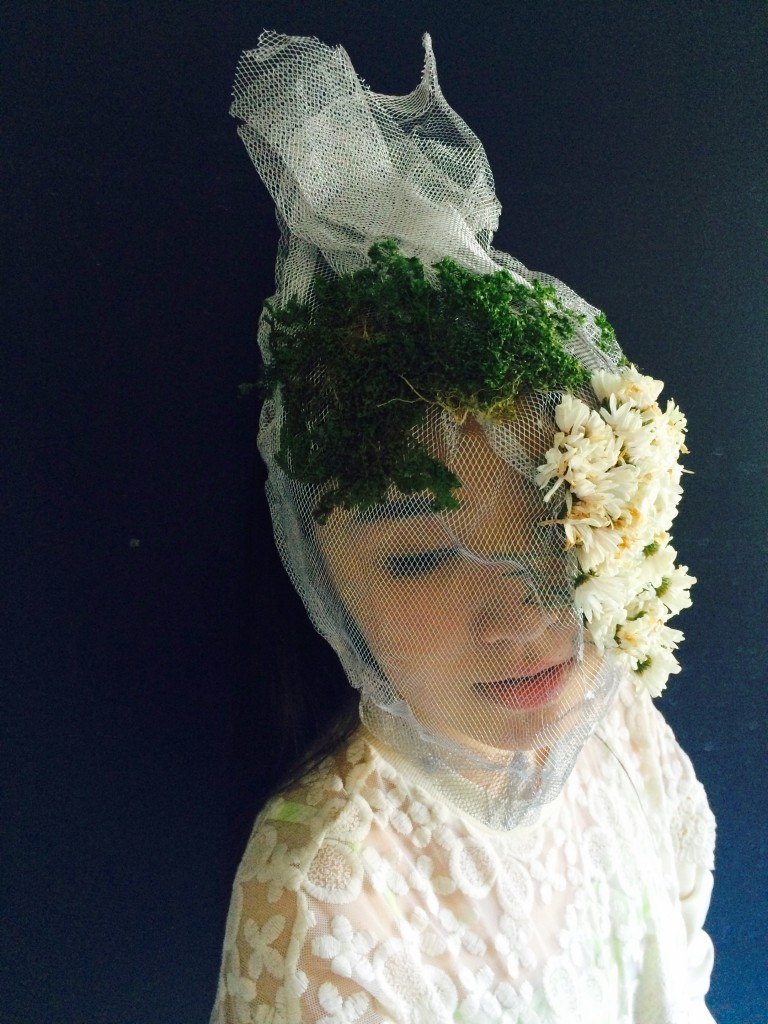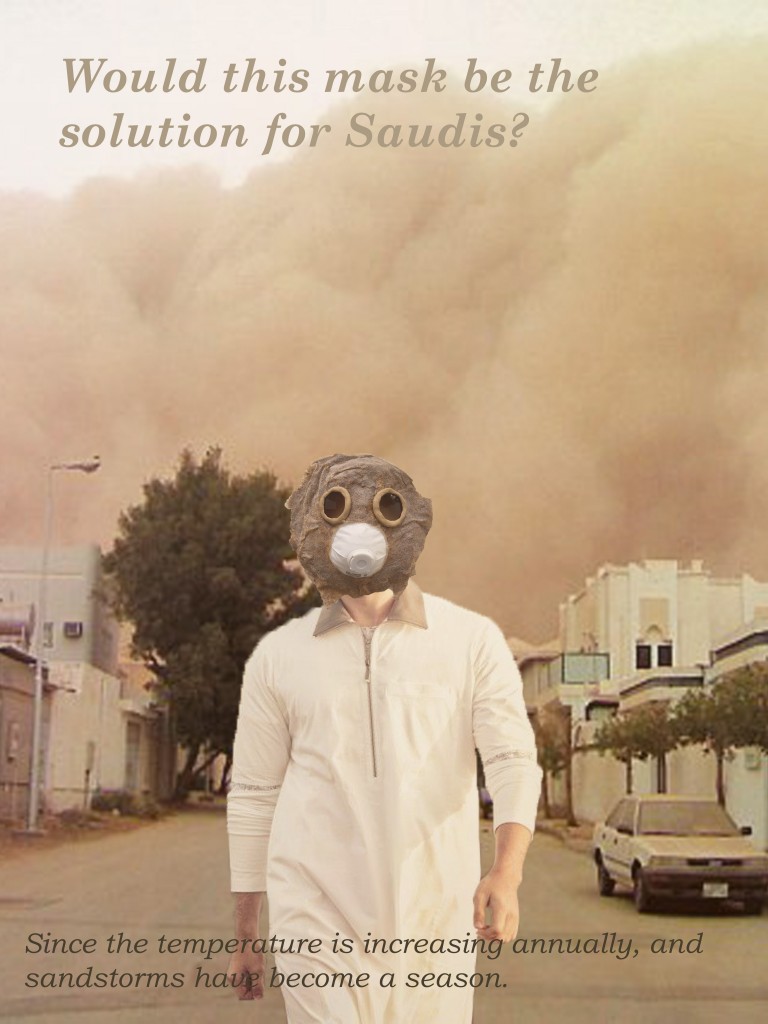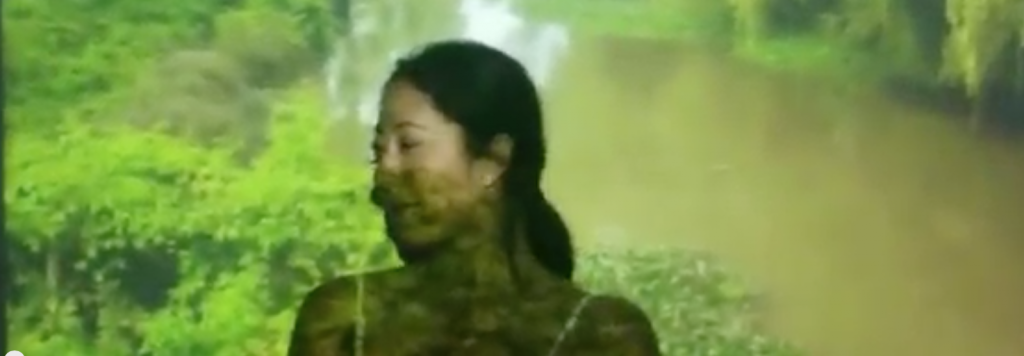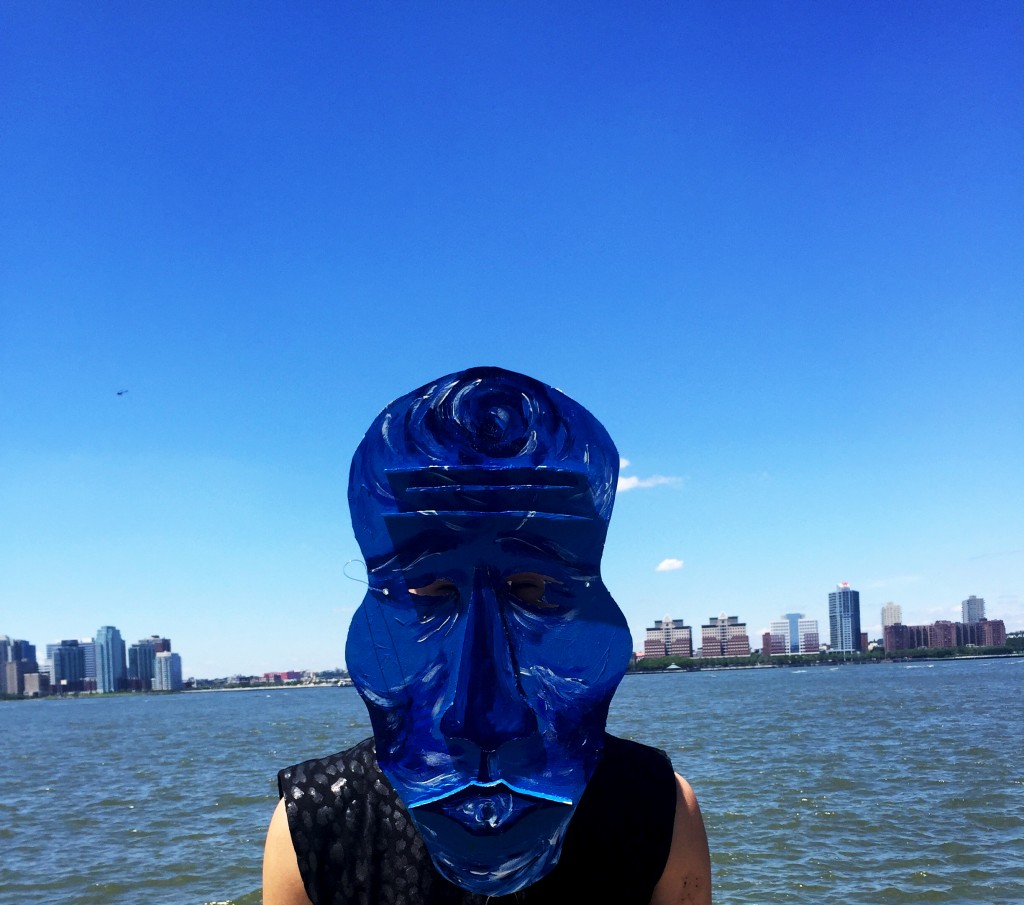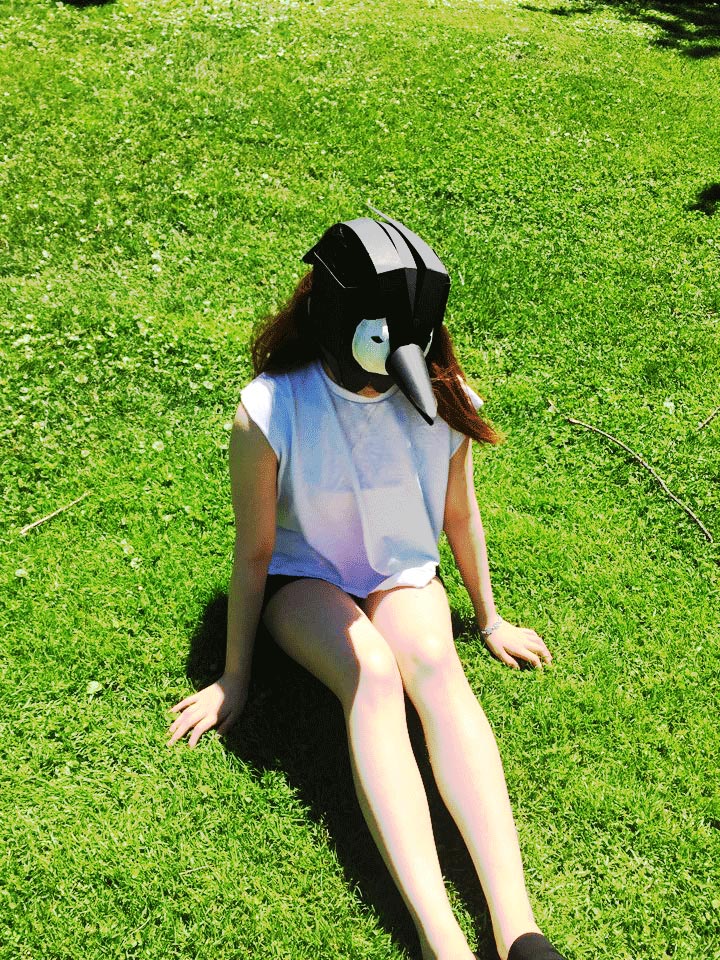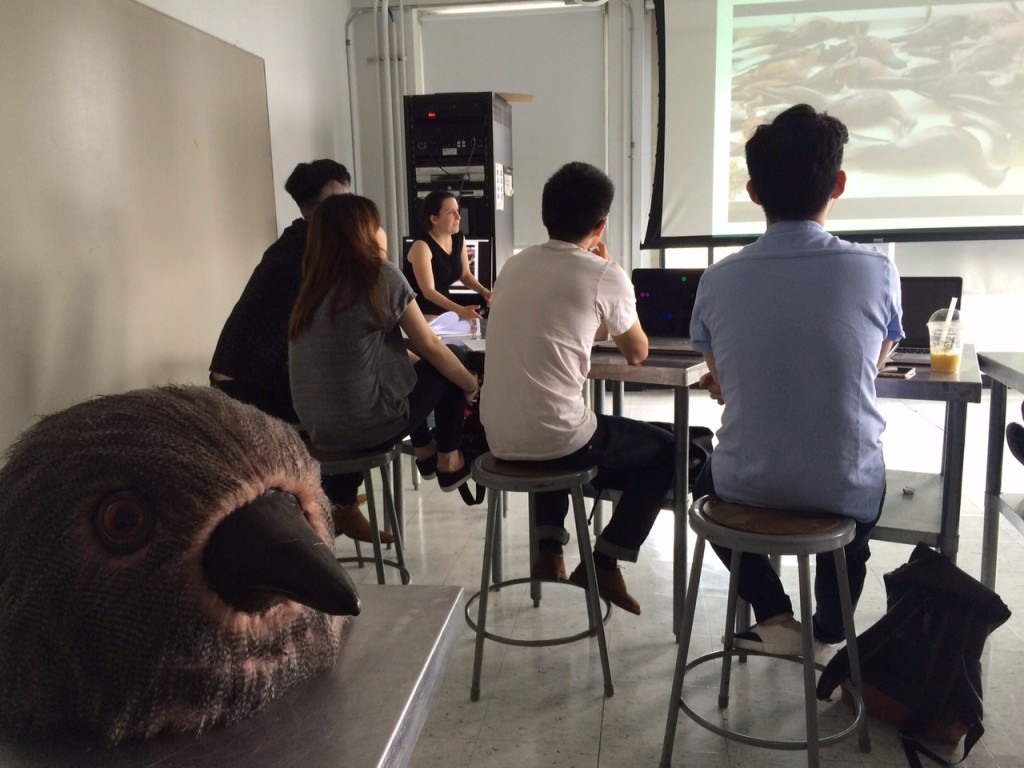image, courtesy Lisa Hirmer, Dodolab
PROJECT FOR SUMMER INTENSIVE 2015 |
Designers are agents of social change. How can DESIGNING, MAKING AND PERFORMING a mask bring awareness to issues related to environmental change and/or possibly alter the behavior of those who use/wear it?
A mask, when intentionally created, has the power to communicate and embody the complexity and wide-range of realities that compose the Anthropocene.
Reflect on the issues we have discussed in class (such as: climate change, wicked problems, storm surge, sixth extinction, social resiliency, guilt/denial, impact on air, water, plants, animals, waste, long-term/geologic thinking and the materials of the Anthropocene, such as plastic and nuclear waste).
From these themes you will design and produce A MASK FOR THE ANTHROPOCENE.
Your project can be an aesthetic interpretation of a mask, but it should be motivated by the themes we have discussed and be carefully produced.
Your mask should do one of following:
1) Be an illustration/representation of a specific issue or “character” who embodies or enacts your chosen theme so that audiences can aesthetically experience that theme or problem in a more meaningful way. Who are the characters of the Anthropocene? How can a mask materialize/translate a theme into an object/character that can be experienced?
2) The mask can invite someone wearing it to behave differently. Perhaps the mask enables a person to be more sustainable or resilient, or maybe the mask provides protection or encouragement in relation to a contemporary environmental problem. Your mask could be designed to be worn as protection or encouragement for a nearly extinct animal, someone living near Fukushima, someone living in Zone 1 of New York City or for someone dealing with poor air quality in Beijing etc. How does the mask invite a different way of behaving? Who might people become when they wear your mask?
PERFORMATIVE DOCUMENTATION: In order to be an effective design, the masks need to be activated (interact with other people or things). Enacting/performing your mask is essential to this project. How might you demonstrate the ideas behind your mask through documentary photos or video? How might you stage a story or narrative about what your mask makes possible or the questions that it presents through photos or video?
download full project brief (PDF)
Xiaoxuan Fu, Dragon Tree Mask: “My mask is based on one of the plant-endangered species names Dragon Tree. Dragon Tree grows in Africa and southern Asia, but due to climate change, they are facing the problem of extinction. (The Lucky Bamboo is one of the species of Dragon Tree.) In order to make an ecofriendly project, I used green tea, rice tea, flour, sweat flour, and corn tassel. As green tea is also endangered species, I use it to make the mask base. By using theses materials, I reenact the Dragon Tree’s shape, and used corn tassel to create the root of the tree. The whole mask is very organic and green, when people wear it; green tea smell is very strong. I think this project can provide a space to feel if you were the Dragon Tree, what would you feel. There even not much people know about the tree, this is also a chance to let people know about the endangered species, and think of the environmental issues as well as get a sense to protect them.”
Ziyang Yan, Vulture Mask, “The theme of my final project will be material, the key word is “No Zero”. I made the mask which related to “sky burial”, because once time, I walked pass a public cemetery, which remind me of a disgusting style of burial in Tibet. In Tibet, people feed their body to vulture after them dead. People there considered it as a holy and meaningful ritual. If the vulture eat all of the dead body, which means this dead person has been accepted by god. As what I learned in this class, I think this “sky burial” could be regarded as a way of “No Zero”. People got life from nature, and then, after vulture eat the dead body, it means this person has been returned to nature. I think it is a unique way to continue the life endlessly. That is why I made this mask. In terms of material, I used wood as my main material, and I used cable ties to connect wood. These cable ties are made of degradable plastic, which can be degraded under high temperature. The main character in “Sky burial” is the vulture, so I made the shape of vulture face, which can express my core concept directly. For the performance, I chose to take a photo at cemetery. Since burial is also a way to return life back to nature, I took a photo with wearing this vulture mask in front of the cemetery is to show two different types of burial today. I think it would helpful to remind people of my main idea when they see this photo.”
Sara (Qihan) Dong, Mask for the Anthropocene: “My concept is to create a natural way to experience the city. I want to create a calming and totally natural mini environment that “filters” out the overwhelming experience of the city. This time, I designed my work with careful considerations about our environment. I chose all the natural materials that are environmentally-friendly, such as, tree branches, real plants, and cotton. The activation of the mask invites people to slow down and to really observe the changes caused by time and humans. The plants die as time goes by, and the contrast between a natural environment and the concrete jungle outside of the mask. By observing the mask itself and its surroundings, my audience would experience the contrast of how the plants are killed by time, meanwhile the buildings becoming taller and taller as time passes. Everything in the city is designed and built up by humans, but we often overlook the changes we have caused to our nature.”
James (Yu Liang) Shih, Sixth Extinction Gas Mask: “The core concept of the mask is to show people how will our lives be like during the Sixth Extinction. The increasing greenhouse gas emissions and pollutions will raise the temperature on our planet, creating a poisonous and unsuitable environment for us to live in. We will wear gas masks as a result of damaging the planet’s environment. By making the mask in a deformable and horrifying shape, my intension is to show the public that we are at the edge of the Sixth Extinction and it is not a “cool” or “exciting event that we can enjoy or brag about. The mask is a symbol of ugliness and awfulness It is a mask that you would never want to be putting on.”
Giovanna (Maria) Vista Martinez, Animal Extinction Mask: “This mask covers the topic of animal extinction. I decided to choose an animal that is about to be extinct and decided to create a mask to share information about this reality and also to create a sense of awareness about the topic. This topic seemed interesting for me to do something about it because we are making incredible creatures disappear and we should do something about it to stop it from happening. The animal I chose was a panda. This mask shows half of the animal and half the skull (meaning death). In this second side (the skull) on the inside part of the mask there are some pushpins attached. This makes the mask to be uncomfortable to wear and also painful. For the performance I decided to have a model wear the piece and slowly some blood appears from the side of the mask where the skull is shown. Through this demonstration, I want humans to feel and consider the pain that these animals are experiencing when they are killed and also when their habitats are destroyed.”
Marina (Rui) Ma,“I had just read a newspaper article couple days ago, it calls “Humans creating sixth great extinction of animal species” it claims that “The rate of extinction for species in the 20th century was up to 100 times higher than it would have been without man’s impact.” And I was truly influenced by this news, I start thinking about this news over and over, so I change my topic from a plant-able mask to a mask to express my sadness. I chose some withered flowers to symbolize the death, the end and extinctions of not only animals, plants and ourselves, because we cannot survive either without them. The white color flowers, in Asian and some other cultures represent “death ceremony”. The aluminum wire is the way I used to describe the human habitats, the skyscrapers and the concrete jungles.”
Bateel Mohammed Saber, Anthropocene Mask for Saudi Arabia “Sandstorms in Saudi Arabia have become a season. It actually occurs twice a year; since we only have 2 seasons, summer and winter, so it happens in the time of change of seasons. The sandstorms are caused by the pressure that is caused by the global warming, causing the wind to stur the sands in the deserts into the urban cities.”
Maria Fernanda Parra Pelissier, video still from Bogotá River Mask: “I have decided to do my mask about the river in Bogotá (Río Bogotá), how it is extremely polluted and how people haven’t been socially resilient and still don’t accept or know how bad the problem is. [The video] shows how bad the river with images and how people are accepting it with an audio. My mask will be the projection on my face. I chose this method because it means different things, first the projection is wider than me, as the river and nature is more powerful than citizens of Bogotá and also because standing there is something awkward but I am not fully aware of what is happening around my face as people in Bogotá they feel bad about the smell but don’t know why and how bad it really is.”
Vincent (Xiang) Cui, Flood/Storm Surge Mask staged at the Hudson River, inspired by NYC hurricane evacuation zones and a Japanese Noh “ghost” mask
Eunji Kim, Penguin Evolution, “I chose “Climate change” as my topic for my final mask project. Specifically “Global warming”. There are a lot of penguins loosing their habitats because of melting ice. It have been found that penguins’ve been moving to find their new habitats. I thought that if they do not find the place, they should be adjusted to the reality. Otherwise they would be extinct. I imagine that they would be evolved and it would look like birds. Instead of heavy bones and feather to swim, they would have light feather like migratory birds.”
On June 17, 2015 Lisa Hirmer of Dodolab was our guest. Learn about passenger pigeon extinction here.
In the afternoon of the 17th we also visited the exhibition Becoming Another: The Power of Masks at the Rubin Museum.
____
But in recent years, Noh mask craftsman Bidou Yamaguchi has been gaining worldwide attention for his masks based on western paintings such as Mona Lisa. He creates these innovative masks using traditional Noh-mask-making techniques. In this episode, we will dive into the beauty of the Noh mask, as tradition and innovation both vie to take center stage.
Guide: Yuji Yamashita (Art Historian)
1) What are 2-3 things you find unique about traditional Noh masks? (history, production/creation, role in culture)
2) How would you describe the relationship between the masks shown in the video and performance?
3) What was your favorite innovation on the 1000-year tradition of Noh by a contemporary artist — and why?
4) How do the artists shown in the video work with, handle and choose their materials? Do you find their process inspiring?
Optional Field trips:
Pierre Hugyhe at the Metropolitan Museum (Untitled) Human Mask and rooftop commission
Thomas Houseago’s new commission Masks (Pentagon), Rockefeller Center
